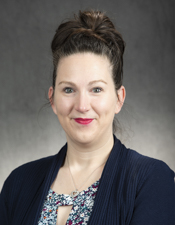State-of-the-art simulation center could be vital to state’s health care workforce
A state-of-the-art medical training simulator could be a vital component in ensuring there’s enough qualified health care workers to meet the state’s need.
So say supporters of HF3020 that would appropriate $11.1 million to build a simulator in southeast Minnesota. Operations would be funded through user fees.
Having access to a simulation center would allow for meaningful, creative and innovative ways to train and develop the health care workforce, said Rep. Liz Boldon (DFL-Rochester), the bill sponsor.
The House Workforce and Business Development Finance and Policy Committee laid the bill over Wednesday for possible omnibus bill inclusion.
Simulations have proven a valuable tool, providing up to 50% of clinical experience in some cases, said Julie Anderson, dean of the College of Nursing and Health Sciences at Winona State University.
Though not a replacement for in-person experiences, simulations are effective in teaching professionalism, safety, delegation, care prioritization and a host of other skills, she said. Additionally, simulation centers can be crucial in accreditation for hospitals and programs.
And simulators can expand training opportunities that could help address an anticipated state health care workforce shortage of 85,000 workers by 2030, including 25,000 nurses.
“A fully prepared health care workforce is essential and essential for continuing Rochester’s status as the center of medical innovation and excellence,” Boldon said.
Increasing access to health care education for underserved students and workers was the impetus of a simulation collaborative in the Rochester area. Members of the private-public partnership include the Mayo Clinic, several southern Minnesota health care centers, state, private and technical colleges, and the Greater Rochester Advocates for Universities and Colleges.
The companion, SF2963, is sponsored by Sen. David Senjem (R-Rochester) and awaits action by the Senate Jobs and Economic Growth Finance and Policy Committee.
Related Articles
Search Session Daily
Advanced Search OptionsPriority Dailies
Speaker Emerita Melissa Hortman, husband killed in attack
By HPIS Staff House Speaker Emerita Melissa Hortman (DFL-Brooklyn Park) and her husband, Mark, were fatally shot in their home early Saturday morning.
Gov. Tim Walz announced the news dur...
House Speaker Emerita Melissa Hortman (DFL-Brooklyn Park) and her husband, Mark, were fatally shot in their home early Saturday morning.
Gov. Tim Walz announced the news dur...
Lawmakers deliver budget bills to governor's desk in one-day special session
By Mike Cook About that talk of needing all 21 hours left in a legislative day to complete a special session?
House members were more than up to the challenge Monday. Beginning at 10 a.m...
About that talk of needing all 21 hours left in a legislative day to complete a special session?
House members were more than up to the challenge Monday. Beginning at 10 a.m...
